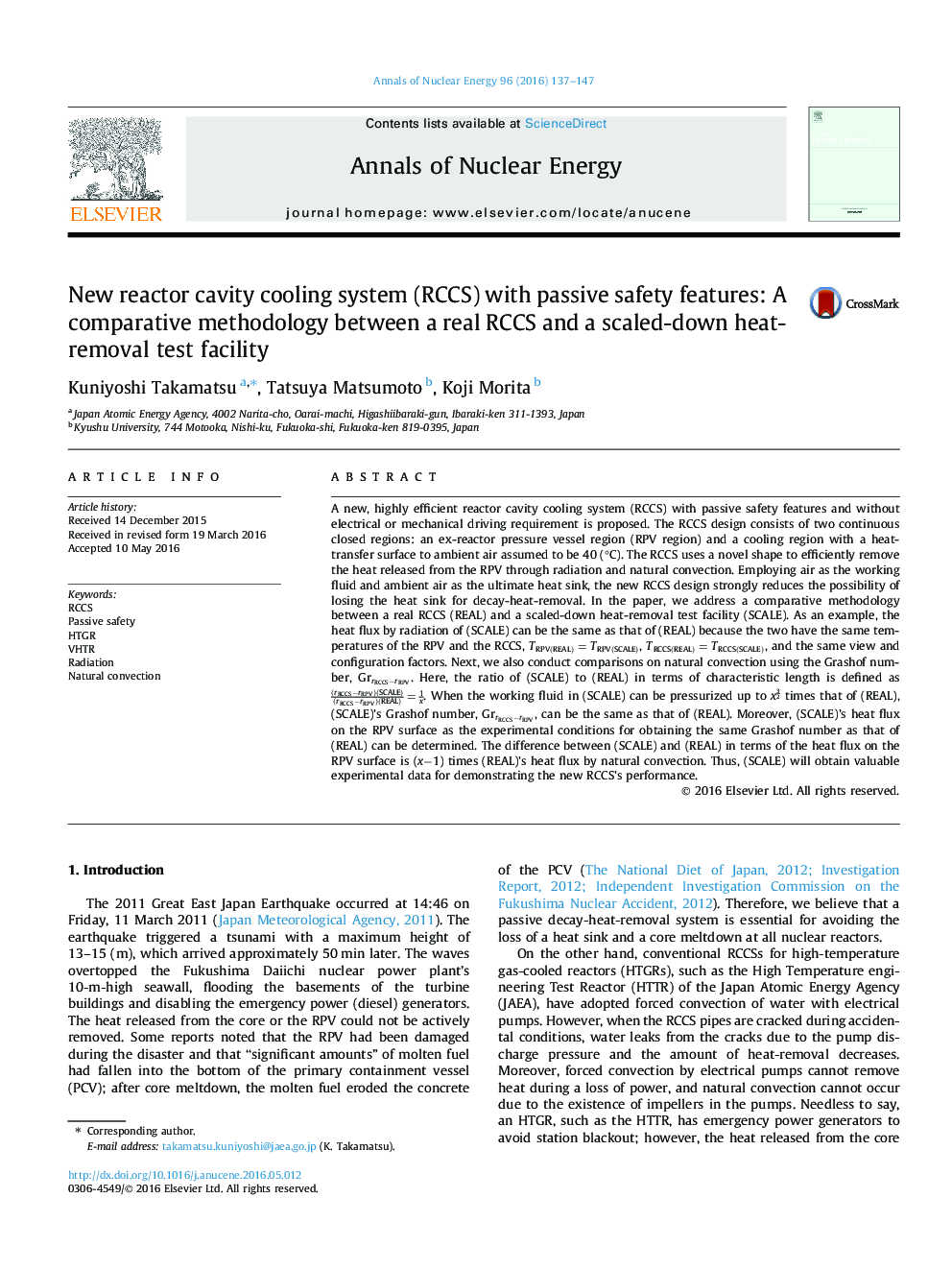| Article ID | Journal | Published Year | Pages | File Type |
|---|---|---|---|---|
| 8067494 | Annals of Nuclear Energy | 2016 | 11 Pages |
Abstract
A new, highly efficient reactor cavity cooling system (RCCS) with passive safety features and without electrical or mechanical driving requirement is proposed. The RCCS design consists of two continuous closed regions: an ex-reactor pressure vessel region (RPV region) and a cooling region with a heat-transfer surface to ambient air assumed to be 40 (°C). The RCCS uses a novel shape to efficiently remove the heat released from the RPV through radiation and natural convection. Employing air as the working fluid and ambient air as the ultimate heat sink, the new RCCS design strongly reduces the possibility of losing the heat sink for decay-heat-removal. In the paper, we address a comparative methodology between a real RCCS (REAL) and a scaled-down heat-removal test facility (SCALE). As an example, the heat flux by radiation of (SCALE) can be the same as that of (REAL) because the two have the same temperatures of the RPV and the RCCS, TRPV(REAL)=TRPV(SCALE), TRCCS(REAL)=TRCCS(SCALE), and the same view and configuration factors. Next, we also conduct comparisons on natural convection using the Grashof number, GrrRCCS-rRPV. Here, the ratio of (SCALE) to (REAL) in terms of characteristic length is defined as (rRCCS-rRPV)(SCALE)(rRCCS-rRPV)(REAL)=1x. When the working fluid in (SCALE) can be pressurized up to x32 times that of (REAL), (SCALE)'s Grashof number, GrrRCCS-rRPV, can be the same as that of (REAL). Moreover, (SCALE)'s heat flux on the RPV surface as the experimental conditions for obtaining the same Grashof number as that of (REAL) can be determined. The difference between (SCALE) and (REAL) in terms of the heat flux on the RPV surface is (xâ1) times (REAL)'s heat flux by natural convection. Thus, (SCALE) will obtain valuable experimental data for demonstrating the new RCCS's performance.
Related Topics
Physical Sciences and Engineering
Energy
Energy Engineering and Power Technology
Authors
Kuniyoshi Takamatsu, Tatsuya Matsumoto, Koji Morita,
